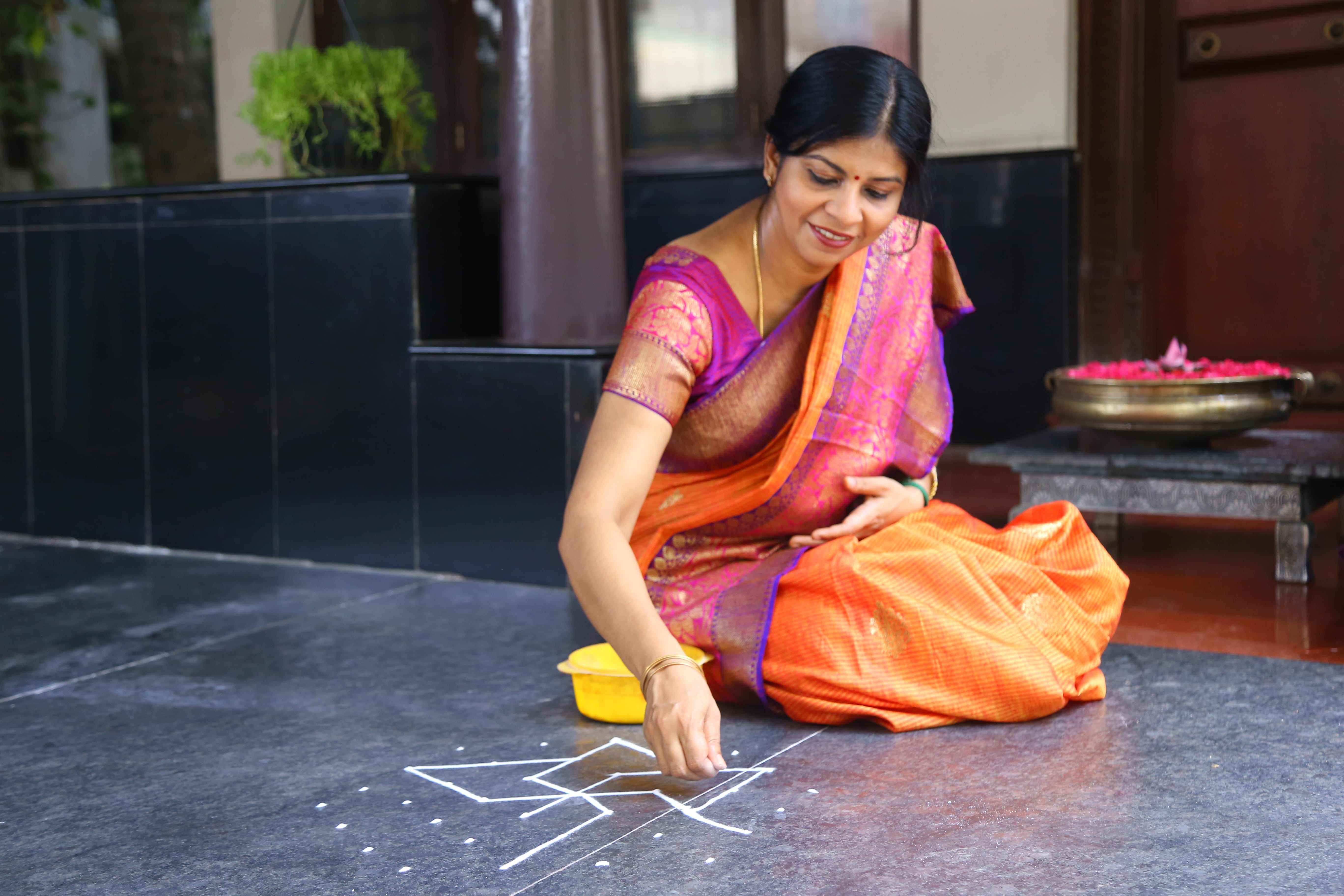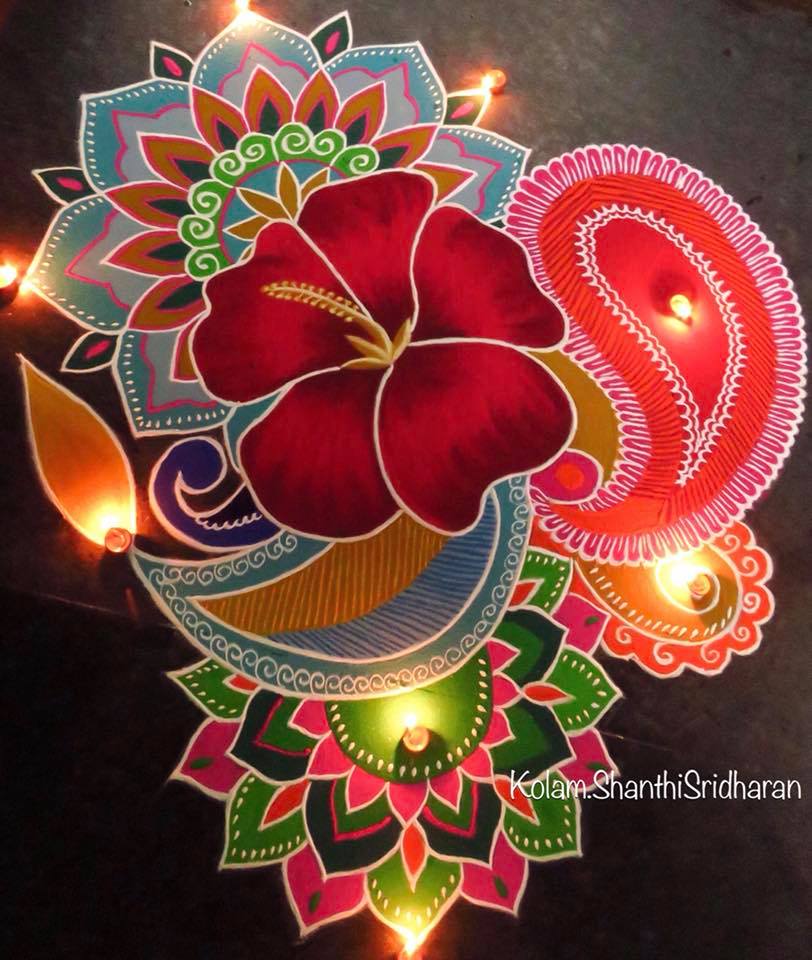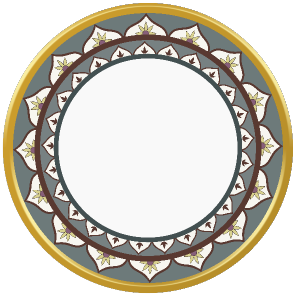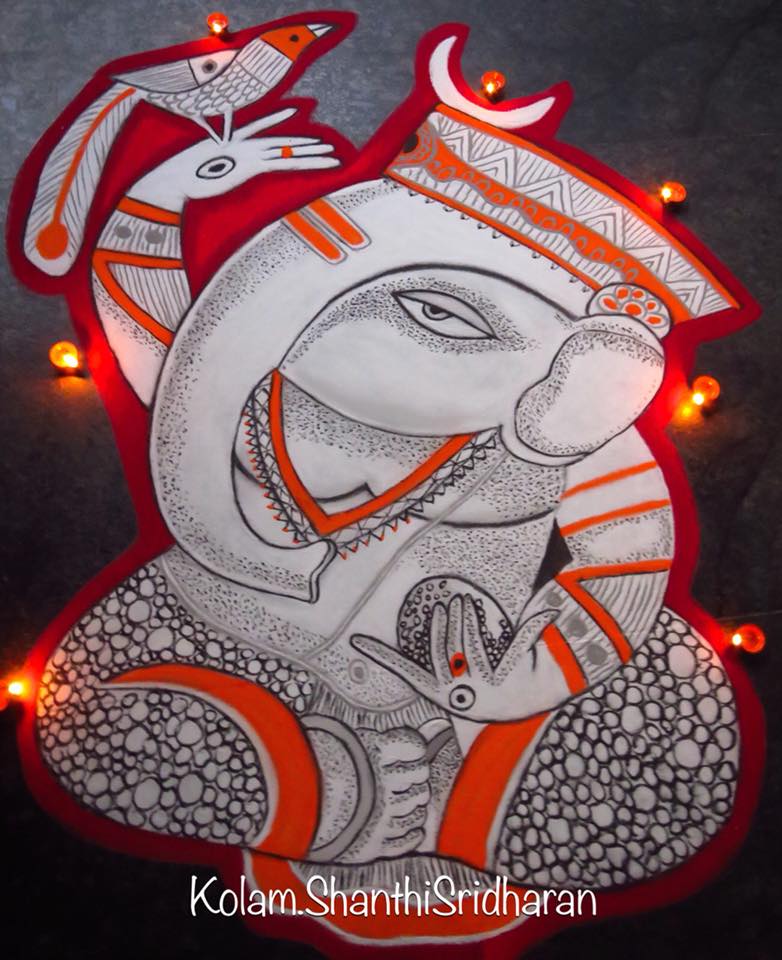Know About The Ancient Art Form, Kolam, With Popular Kolam Artist Shanthi Sridharan
Shanthi Sridharan is a popular Kolam artist from Chennai. She has been doing Kolam since the age of eight when her grandmother introduced her to the art. She would wake up at 4 am during the Marghazi Masam (the bhakti period from December 15th to January 14thevery year), do the Kolam, and light two diyas. Today, Shanthi Sridharan is spreading the knowledge and significance of performing Kolam art through social media. She is often found imparting live demonstrations on Facebook.
She shares some interesting aspects with us of this revived art form.

Something beautiful in making
- A basic and the oldest form of art: Kolam, an old art form, teaches us the basics of drawing. “It is a custom for us Tamilians. You have to put a kolam in front of your house. It is a sign of welcoming Goddess Lakshmi”, Shanthi says.
- Patient Drawing: A simple everyday kolam requires just 10 to 15 minutes of drawing. However, during the festival season, the kolams become more focused on the particular deity being worshipped and could take 2 to 3 hours of patient drawing.
For example, during Ganesh Chaturthi, every day, a different form of Ganesh will be drawn, sometimes standing, sometimes sitting etc. No kolam will be the same as another, even if the same format or pattern is followed.

Beautiful kolam art
- Choosing the right Kolam Powder: Different powders may be used for making kolam. Ordinary kolam powder is a white stone powder mixed in the right proportion with rice powder to ensure smoothness. The smoother the kolam powder, the better the flow. Shanthi uses a nylon powder since it is smoother. For coloured kolams, she uses rangoli powder.
- Difference between Rangoli and Kolam: Kolam and rangoli are similar, except that rangoli is free-flowing art, whereas, in kolam, one begins with dots that have to be joined together with lines, loops and gestures. Kolam is done only with dots. You join the dots with lines, loops and gestures. It is an infinite process. You start with a dot. You can keep any number of dots and keep adding. You can make the kolam as big as you want. You have to have the patience.
- Types of Kolam: There are different types of kolam, such as Kambi Kolam, Udupulli Kolam, and Padi Kolam, and some which are typical to festivals such as Pongal Kolam and Diwali Kolam. Udupulli Kolam is done only with dots. You don’t touch the dots as you draw the lines. In this, you can start with one dot and draw lines without touching the dots and come back in one flow to the same spot from which you began, if you are focused and skilled. In Padi Kolam, you join the 4 dots to form the square which is the yantra, is the basis of kolam, and also used for meditation. People develop mandalas for meditation through this.
- Develops meditative power: Kolam helps develop meditative power. It is an art form that needs focus and concentration. When Shanthi does Kolam, she finds herself in a quiet, undisturbed space of heightened spirituality.

Divinity and beauty in the art
- Kolam helps create a sense of detachment: Each day you make a kolam and wash it away the next day. Shanthi says, “I am ready to welcome my God with a new one.” So you cannot cling to any piece of creation, and this helps to learn to let go.
- Imparts Indian Culture: Shanthi observes, “We don’t give importance to our culture. I want to make kolam one of the most popular arts. I strongly believe Kolam can provide a solid base to children for learning the art of drawing. Now, you can spread a sheet and draw on it. My live sessions are focused on spreading this great art among people.”
For more interesting updates on Indian art and culture, follow us on
Facebook,
Instagram, and
Twitter.






 Something beautiful in making
Something beautiful in making
 Beautiful kolam art
Beautiful kolam art
 Divinity and beauty in the art
Divinity and beauty in the art